Illinois Crop Update – May 31, 2024
Emily Hansen – Commercial Agriculture Educator
LaSalle County
Soil Conditions: Near Normal
We have had intermittent showers over the past week, so there has been a lot of opportunity for farmers to finish planting. The vast majority of fields in LaSalle County have been planted and have seedling emergence. Corn is ranging in development from VE to V4. Soybeans are ranging from VE to V1.
Russ Higgins – Commercial Agriculture Educator
Grundy County
Soil Conditions: Mildly Wet (soil is wetter than normal, local vegetation is healthy)
A dryer weather pattern allowed most to finish or nearly finish planting or replanting. Earliest planted corn is near or at V6 and earlier planted soy is now V3. We encourage early scouting of fields, including replant areas to evaluate crop emergence (note soy replant seedling feeding in picture), weed pressure and height. Expecting post corn herbicide applications to start soon.
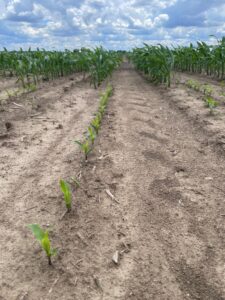
Figure 1: Replant corn – V5 and V1

Figure 2: Replant soy feeding by wildlife

Figure 3: V2 – second trifoliate soy
Meagan Diss – Commercial Agriculture Specialist
Warren County
Soil Conditions: Mildly Wet (soil is wetter than normal, local vegetation is healthy)
Planting is back in action across the county with some replants due to soil crusting. Some fields did see some extent of wind damage from a storm 5/24 but are bouncing back. Most fields are looking around V2-V6 for corn and VC-V2 for soybeans depending planting date.
Reagan Tibbs – Commercial Agriculture Educator
Logan County
Soil Conditions: Near Normal
Last week’s high winds and dust storms sidelined many producers in the area. Warmer temperatures and clear skies later in the week allowed most farmers to catch up on or finish planting across Logan, Menard, and Sangamon counties. Rain on Friday (5/24) and Sunday (5/26) provided some moisture for corn and soybeans that have recently emerged. In earlier-planted fields, corn and soybean plants remain in the V2-V3 stages. In the fields that were more recently planted, corn plants are in the VE stage, and soybean plants are in the VC-VE stages.

Figure 4: A dust cloud that developed due to high winds. This picture was taken west of Elkhart in Logan County.

Figure 5: A waterhemp plant growing in a soybean field in Logan County.
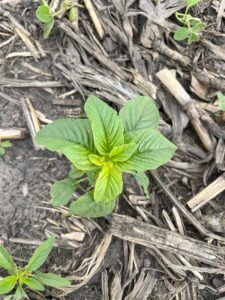
Figure 6: A redroot pigweed plant growing in a soybean field in Logan County.
Doug Gucker – Local Food Systems and Small Farms Educator
Dewitt, Macon, and Piatt County
Soil Conditions: Mildly Wet (soil is wetter than normal, local vegetation is healthy)
Early planted corn and soybean fields are in the V6 and 3rd trifoliate stages, respectively. Most fields in the area are planted, but there are still a few fields that have to be planted in the areas that received heavy rains. Ponding in planted fields is a problem in some areas. The emerged crops look good but there is a wide range in plant growth. The few wheat fields in area are looking good with very little head scab and plant health generally looks good.

Figure 7: Like a lot of areas across the state, my area has the early planted fields and the late planted fields

Figure 8: Wheat fields are looking good with low levels of head scab present.
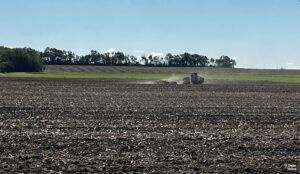
Figure 9: The 3-county area is over 95% planted, but there are still some fields needing to be planted.
Nick Seiter – Extension Field Crops Entomologist
Champaign County
Soil Conditions: Moderately Wet (soil is damp, standing water may be present in low areas, water bodies are full)
Our recent heavy rains occurred at the same time as 50% egg hatch for western corn rootworm in east central Illinois – it will be interesting to see if that impacts the rootworm population this year. Generally, saturated soils during egg hatch cause a lot of mortality. It was a quiet week for non-cicada-related insect questions. Continue scouting for black cutworm and other seedling pests up to about V5.
Luke Merrit – Agricultural Research Specialist
Pike County
Soil Conditions: Near Normal
Last week remained dry despite the small chances of rain. The rain didn’t hit this region until Friday late morning with nearly an inch of rain total throughout the weekend. A lot of corn acres got sprayed with post herbicide applications last week. This morning, much of the corn appears to be in the V4 to V5 growth stage. The earlier planted soybean is around the V2 growth stage.
Talon Becker – Commercial Agriculture Specialist
Coles County
Soil Conditions: Near Normal
The crop in Coles County appears to be off to a good start. Of the fields observed during my transect of the county (5/28), I would estimate approximately 80-90% of fields had been planted, with 60-70% emerged. The majority of those emerged fields were still at early growth stages, but I did find a few corn fields at V4+. The little wheat I saw in the southwest portion of the county was starting to senesce. Soil conditions looked good. I did not see any water standing and only the occasional wet/muddy spot where the crop still looked healthy. These conditions also likely helped with applications of timely post-emergence weed control. I saw only a couple of fields that were in need of attention in that respect.

Figure 10: Corn at V5; representative of most advanced crop observed
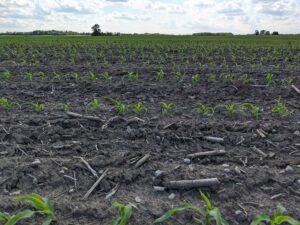
Figure 11: Corn at V2; representative of the majority of observed corn crop
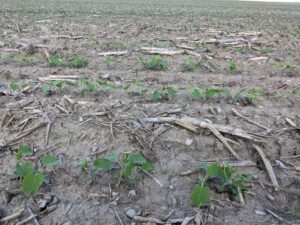
Figure 12: Soybeans at VC; representative of the majority of observed soybean crop
Dane Hunter – Commercial Agricultural Specialist
Bond County
Soil Conditions: Moderately Wet (soil is damp, standing water may be present in low
areas, water bodies are full)
While many fields were planted between rains during the last few weeks, there are still many unplanted fields in the region. Of the non-wheat acres, roughly a third of fields are out of the ground, mostly corn ranging from V2-V6. Another third have been planted and have not yet emerged or are just spiking, reflecting the recent planting push. The final third is unplanted, presumably left for first-crop beans since most of the standing crop is corn. Strong winds from the last round of storms have contributed to a large amount of lodged wheat this season.

Figure 13: Corn at V5-V6 in a conventionally tilled field. This was the tallest corn I found on this tour.
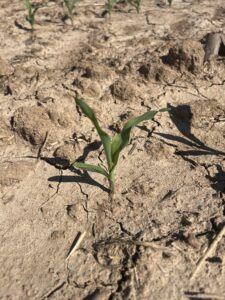
Figure 14: Corn at V2. This was more typical of corn in the area.

Figure 15: These soybeans were the largest I found this week. They were around V1-V2, but heavily tattered from the recent windstorms.





